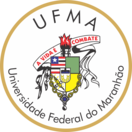| Compartilhamento |


|
Use este identificador para citar ou linkar para este item:
https://tedebc.ufma.br/jspui/handle/tede/5608Registro completo de metadados
| Campo DC | Valor | Idioma |
|---|---|---|
| dc.creator | GONÇALVES , Jaqueline Cunha | - |
| dc.creator.Lattes | http://lattes.cnpq.br/0231620166400148 | por |
| dc.contributor.advisor1 | OLIVEIRA, Rubenil da Silva | - |
| dc.contributor.advisor1Lattes | http://lattes.cnpq.br/8814177911312131 | por |
| dc.contributor.referee1 | OLIVEIRA, Rubenil da Silva | - |
| dc.contributor.referee1Lattes | http://lattes.cnpq.br/8814177911312131 | por |
| dc.contributor.referee2 | NERIS, Wheriston Silva | - |
| dc.contributor.referee2Lattes | http://lattes.cnpq.br/0108605127365257 | por |
| dc.contributor.referee3 | ALVES, Érica Fernandes | - |
| dc.contributor.referee3Lattes | http://lattes.cnpq.br/6485711533901908 | por |
| dc.date.accessioned | 2024-11-19T13:45:10Z | - |
| dc.date.issued | 2023-07-31 | - |
| dc.identifier.citation | GONÇALVES , Jaqueline Cunha. Cabelo, resistência e ressignificação: um estudo sobre o cabelo como forma de identidade da mulher negra em o tapete voador (2016). 2023. 89 f. Dissertação (Programa de Pós-Graduação em Letras- Campus Bacabal) - Universidade Federal do Maranhão, Bacabal, 2023. | por |
| dc.identifier.uri | https://tedebc.ufma.br/jspui/handle/tede/5608 | - |
| dc.description.resumo | A pesquisa tem por objetivo analisar a construção do cabelo afro das personagens femininas na obra O tapete voador (2016), de Cristiane Sobral. Considera-se que o cabelo da mulher por muito esteve demarcado por adjetivos desqualificadores e que procuravam naturalizar o racismo tão presente nas relações sociais, seja no universo do trabalho, na Igreja e também no cotidiano da mulher negra. Para isso, realizamos uma pesquisa de cunho bibliográfico e de caráter descritivo e explicativo, além de seguir abordagem qualitativa e tomando como objeto de pesquisa os contos “O tapete voador”, “Pixaim”, “Metamorfose” e “Renascença”, presentes na coletânea O tapete voador (2016). Como fundamento teórico buscou-se Candido (2006), Woodward (2014), Hall (2003), Alves (2010), Munanga (2009), Hattnher (2005); Mattelart e Neveu (2004), Kilomba (2020), Fanon (2020), Santiago (2012), Gomes (2008), Perrot (2019), entre outros. Os resultados mostram que, a leitura dos contos selecionados em confronto com a teoria demonstra o cabelo como elemento que reforça e ressignifica o corpo feminino, além de servir como marca do empoderamento de gênero e etnia, da sensação de pertencimento à comunidade negra e, do contrário, seria deslegitimar a identidade da mulher negra, fazê-la deslocar-se, negativá-la enquanto mulher. | por |
| dc.description.abstract | The research aims to analyze the construction of the afro hair of the female characters in the work O tapete voador (2016), by Cristiane Sobral. It is considered that women's hair has long been demarcated by disqualifying adjectives that seek to naturalize the racism that is so present in social relations, whether in the world of work, in the Church and also in the daily lives of black women. To this end, we carried out bibliographical research with a descriptive and explanatory nature, in addition to following a qualitative approach and taking as research objects the short stories “O tapete voador”, “Pixaim”, “Metamorfose” and “Renascença”, present in the collection O tapete voador (2016). As a theoretical foundation, we sought Candido (2006), Woodward (2014), Hall (2003), Alves (2010), Munanga (2009), Hattnher (2005); Mattelart and Neveu (2004), Kilomba (2020), Fanon (2020), Santiago (2012), Gomes (2008), Perrot (2019), among others. The results show that, reading the selected stories in comparison with the theory demonstrates hair as an element that reinforces and gives new meaning to the female body, in addition to serving as a mark of gender and ethnic empowerment, the feeling of belonging to the black community and, of Otherwise, it would be to delegitimize the identity of the black woman, to make her move, to negate her as a woman. | eng |
| dc.description.provenance | Submitted by Daniella Santos (daniella.santos@ufma.br) on 2024-11-19T13:45:10Z No. of bitstreams: 1 JAQUELINEGONÇALVES.pdf: 774802 bytes, checksum: 76d77fca30803e2a874d8c388e34f06b (MD5) | eng |
| dc.description.provenance | Made available in DSpace on 2024-11-19T13:45:10Z (GMT). No. of bitstreams: 1 JAQUELINEGONÇALVES.pdf: 774802 bytes, checksum: 76d77fca30803e2a874d8c388e34f06b (MD5) Previous issue date: 2023-07-31 | eng |
| dc.description.sponsorship | CAPES | por |
| dc.format | application/pdf | * |
| dc.language | por | por |
| dc.publisher | Universidade Federal do Maranhão | por |
| dc.publisher.department | DEPARTAMENTO DE LETRAS/CCH | por |
| dc.publisher.country | Brasil | por |
| dc.publisher.initials | UFMA | por |
| dc.publisher.program | PROGRAMA DE PÓS-GRADUAÇÃO EM LETRAS - Campus Bacabal | por |
| dc.rights | Acesso Aberto | por |
| dc.subject | identidade; | por |
| dc.subject | mulher negra; | por |
| dc.subject | cabelo; | por |
| dc.subject | autoria feminina. | por |
| dc.subject | Cristiane Sobral; | por |
| dc.subject | identity; | eng |
| dc.subject | black woman; | eng |
| dc.subject | hair; | eng |
| dc.subject | female authorship. | eng |
| dc.subject | Cristiane Sobral | eng |
| dc.subject.cnpq | Letras | por |
| dc.title | Cabelo, resistência e ressignificação: um estudo sobre o cabelo como forma de identidade da mulher negra em o tapete voador (2016) | por |
| dc.title.alternative | Hair, resistance and resignification: a study on hair as a form of identity for black women in The Flying Carpet (2016) | eng |
| dc.type | Dissertação | por |
| Aparece nas coleções: | DISSERTAÇÃO DE MESTRADO - PROGRAMA DE PÓS-GRADUAÇÃO EM LETRAS - CAMPUS BACABAL | |
Arquivos associados a este item:
| Arquivo | Descrição | Tamanho | Formato | |
|---|---|---|---|---|
| JAQUELINEGONÇALVES.pdf | Dissertação de Mestrado | 756,64 kB | Adobe PDF | Baixar/Abrir Pré-Visualizar |
Os itens no repositório estão protegidos por copyright, com todos os direitos reservados, salvo quando é indicado o contrário.




